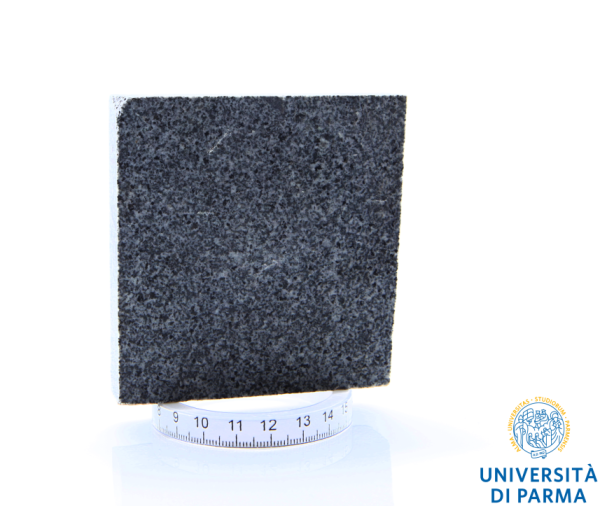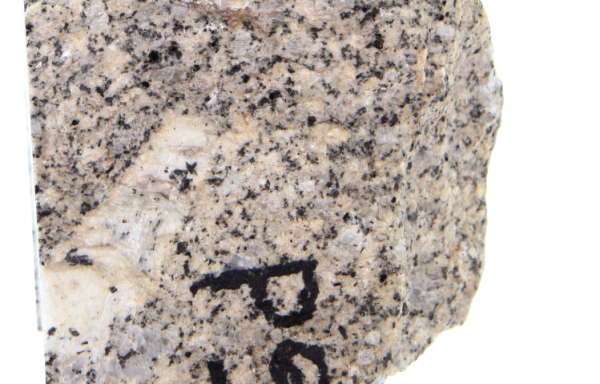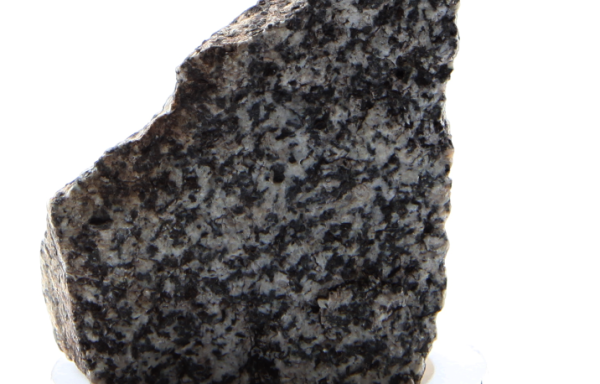Rock
Medium-fine-grained rock with individual crystal grains visible to the naked eye: plagioclase (milky white); alkali feldspar (pink); amphibole (dark green). The rock sample comes from the small Traversella pluton (31 Ma) that represents the westernmost outcropping igneous body belonging to the Tertiary magmatic rocks of the Western Alps (North Italy) (Ji et al., 2019; DOI: 10.1111/ter.12377). The nearby Biella pluton (see the S-B syenite) belongs to these igneous bodies, too. Like the Biella pluton, the rocks extracted from the Traversella pluton have been utilized over a long period of time as building and ornamental stone in Italy.
Thin section description:
The PPL image shows coloured and colourless minerals. The areas showing a dark to pale green colour (pleochroism) are amphibole (Amp); the areas with grey colour are clinopyroxene (Cpx). Some Cpx crystals are rimmed by Amph. The crystals showing the light to dark brown pleochroism are biotite (Bt). The two Bt crystals indicated in the PPL view have a different optic orientation: Bt (1), with no cleavage, is cut in the z-axis orientation of the crystal thus displaying the (001) face; Bt (2) shows the typical (001) parallel cleavage traces and thus is a crystal cut in an orientation normal to that of the Bt (1). In the XPL imagine, the Bt (2) crystal is near to parallel extinction and shows a stippled appearance (known as birds-eye texture), characteristic of all micas. The small black areas in PPL view are occupied by opaque minerals (Opq). The colourless minerals are mainly small laths of plagioclase (Pl) crystals, showing multiple twinning with grey first-order interference colours in XPL view, while the alkali feldspar (Afs) grains are rare.
| thin section PPL | thin section XPL |
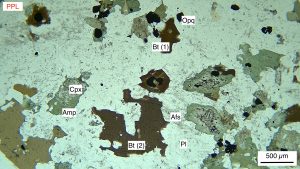 |
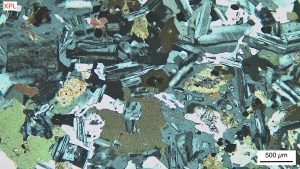 |
Map
PPL
XPL
Info
| Place: | Cava Pian Campiglia Vico Canavese (Torino) |
| Classification: | monzodiorite |
| Specimen n°: | DI-VC |

